When you go hiking, you obviously have to pack the best backpacking axe and hatchet because these are the best tools for chopping up small to medium trees and logs. Whether you want to shave the bark off of a tree to collect firewood, field dress a large animal, or clear obstacles from the trail, a hatchet or an axe is a better option than a large knife. As both are wood chopping tools, many people find the hatchet vs axe concept confusing, thinking these two terms are interchangeable. Are they?
Contents
Hatchet vs Axe: The Differences
Hatchets and axes look almost similar. Both feature a steel head attached to a wooden or composite handle. Some hatchet models could be carved out from one large piece of steel and some have a two-sided head, which means that the tool is sharp on both ends.
A hatchet looks like a scaled-down axe, but they are different tools, designed for performing different tasks. In the discussion of hatchet vs axe, you will see multiple difference between the tools, spanning from size to applications.
Size of the Shaft
The handle of an axe is around 32 to 36 inches long in an average and the head weighs somewhere between three and six pounds. The camping versions tend to be smaller, with handles as short as 19-22 inches and the head weighs anywhere from 1.5-2 pounds.
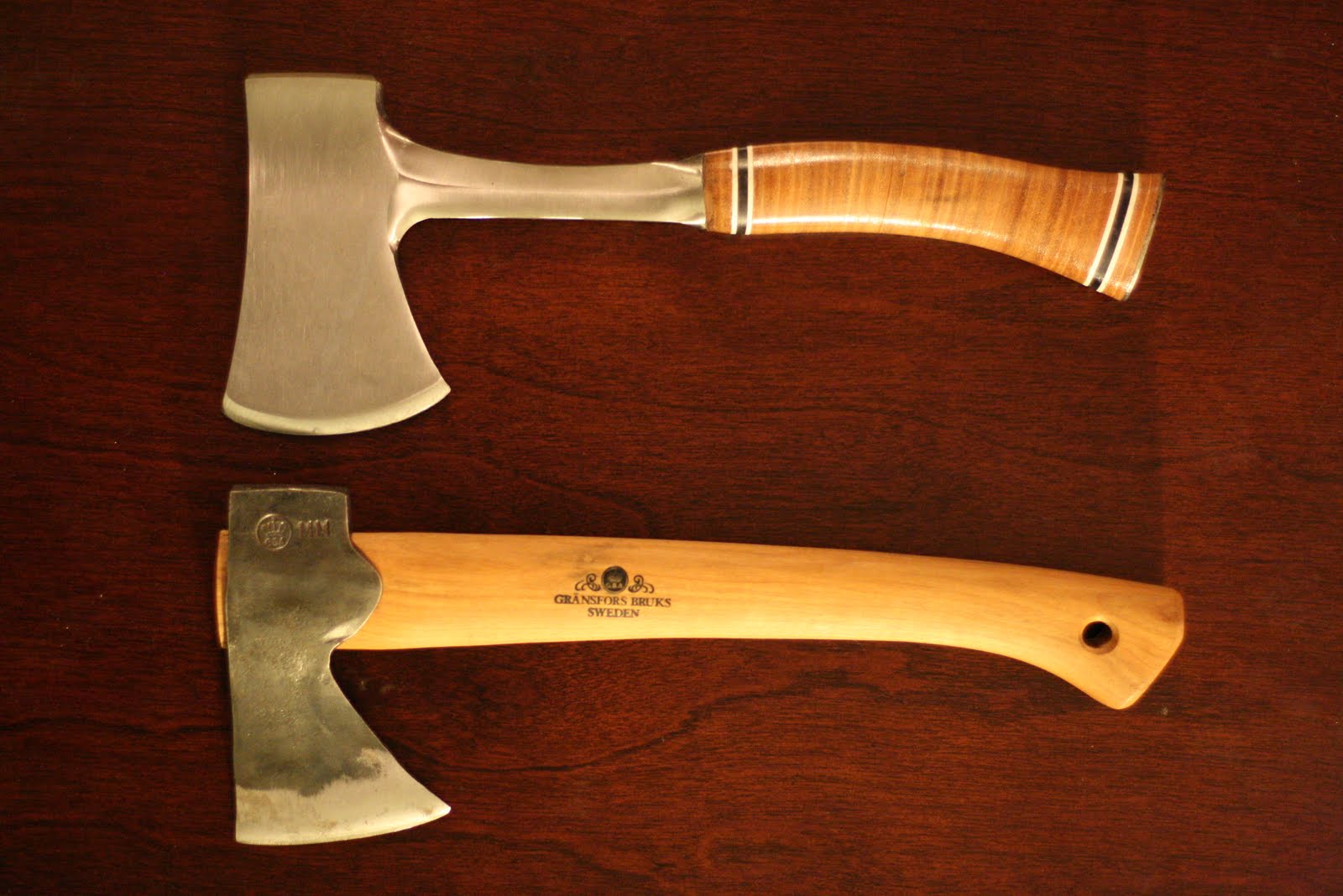
A hatchet is around half the size of a camping axe. The difference in shaft lengths enables the users to apply various cutting angles and makes it easier to perform tough chopping tasks.
Design of the Shaft
The handle of both tools features a gentle double S curve, instead of being straight (though some models could have linear handles). The curvy design absorbs some socks of impact. It also helps with achieving a better balance so that you can do the chopping work for a long time. Finely balanced chopping tools provide better swings, helping with cutting wood more efficiently. The curves also facilitate a better grip and don’t make you wear out quickly.
However, if you closely look at the hatchet vs axe handles, you will find some minor variations. The shaft of a camping axe might be slightly angled. But, it is extended at around 90-degree angle to the head in most models. On the contrary, a hatchet’s handle is either curvy or angled forward. The head is almost flush with the highest forward-bent point of the shaft.
Another variation is seen in the materials of the handles. Metal handles are quite common in hatchets but are hardly found on camping axes. The handle of larger axes is always made of wood because a metal shaft is likely to bend or break from the impact of the blows.
Head Shape
It’s another criterion where you will find variance in hatchet vs axe. The head shape of these tools is dissimilar even though they look almost similar. The axe head is larger and weightier than a hatchet head. It is slightly thinner from the cutting edge to the back of the head. On the other hand, a hatchet has a narrow head that features a larger cutting blade compared to the smaller body.
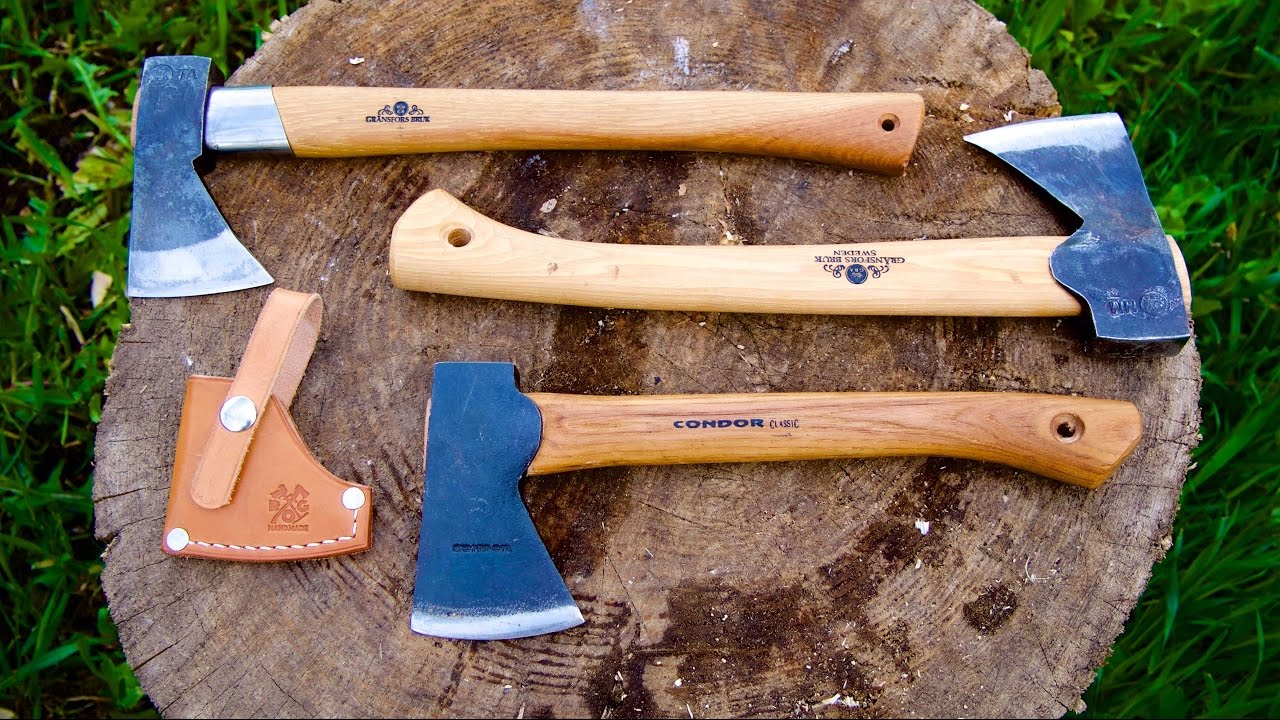
Some hatchets are designed for multitasking. You will find them with a hammer structure on the back of the head. Axes, especially the larger ones, will not ever have such a hammer-like head.
Head Weight
As the head size of these tools differs, their weight will also be different. Full-size axes have the highest weight, two or three times more than a hand axe. The hatchets are the smallest of them. So, their head’s weight is almost half of the head of a camping axe. The variations in the weight help them doing the tasks they are designed to do.
Portability
Hatchets are lighter and smaller, so they are more portable than their bigger and heavier counterparts. You can carry them in your belt holster or clip on to your backpack. Carrying a hand axe is a hassle because its long shaft will hit your knees and shins with every step if you clasp it to the waistband. Normally, campers leave it to the campsite but you can strap it to the backpack in case if you need to carry it.
Applications
Due to the short handle, you have to use a hatchet with one hand. For this reason, you cannot exert much force to the blows. The tool is effective for shaving the bark off of trees and small plants, up to three inches in diameter. It can also split large logs of soft woods and small pieces of harder woods.
Hatchets especially come handy for field dressing larger animals. Their smaller size and the advantage of operating with one hand allow you to use them in tight space. They are also strong enough to chop through any bones.

The hammerhead hatchets are suitable for more functions including hammering tent poles, fashioning pyramid frames for cooking, busting up rocks, and more.
Contrariliy, you have to use the axes with two hands, utilizing the full force of kinetic energy to bring more power to your blows. These are designed to cut large trees, split hard and big wood logs, and field dressing large animals like buffalo. It is possible to use a camping axe with one hand. However, keeping the balance will be difficult and you will be tired quickly.
The Final Words
The hatchet vs axe discussion makes it clear that the first one is suitable for light wood chopping tasks, collecting firewood, setting the tent, and other small chores. The axes do the job of chopping down trees and large wood logs. You can use a hatchet like an axe and vice versa, but it will be tiring and you won’t get the right balance. Unless you are not hiking a difficult trail in the wilderness or camping in the middle of a dense forest, keeping only a hatchet will be enough for doing all the chopping and hammering tasks in camping.
Last Updated on May 12, 2018
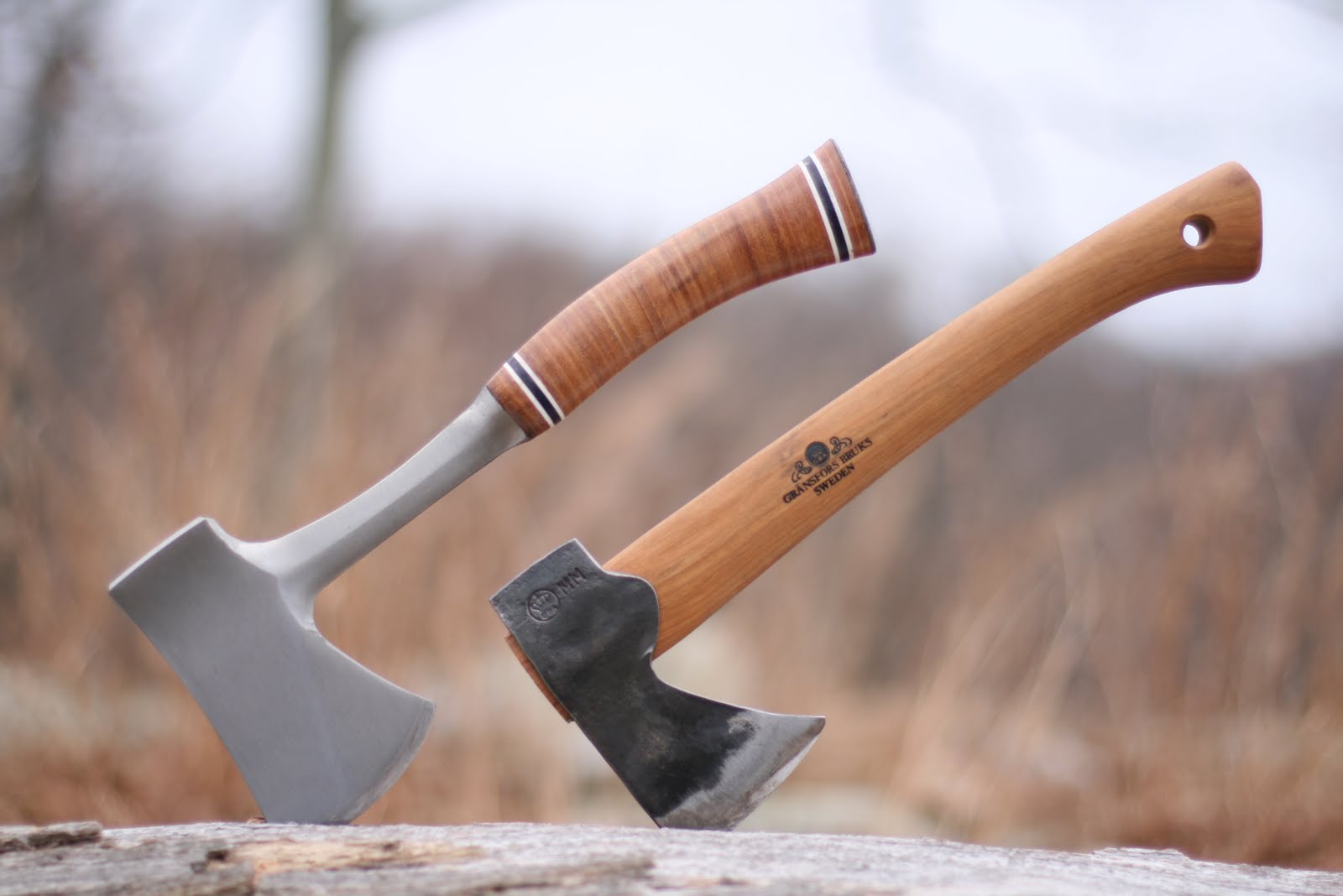
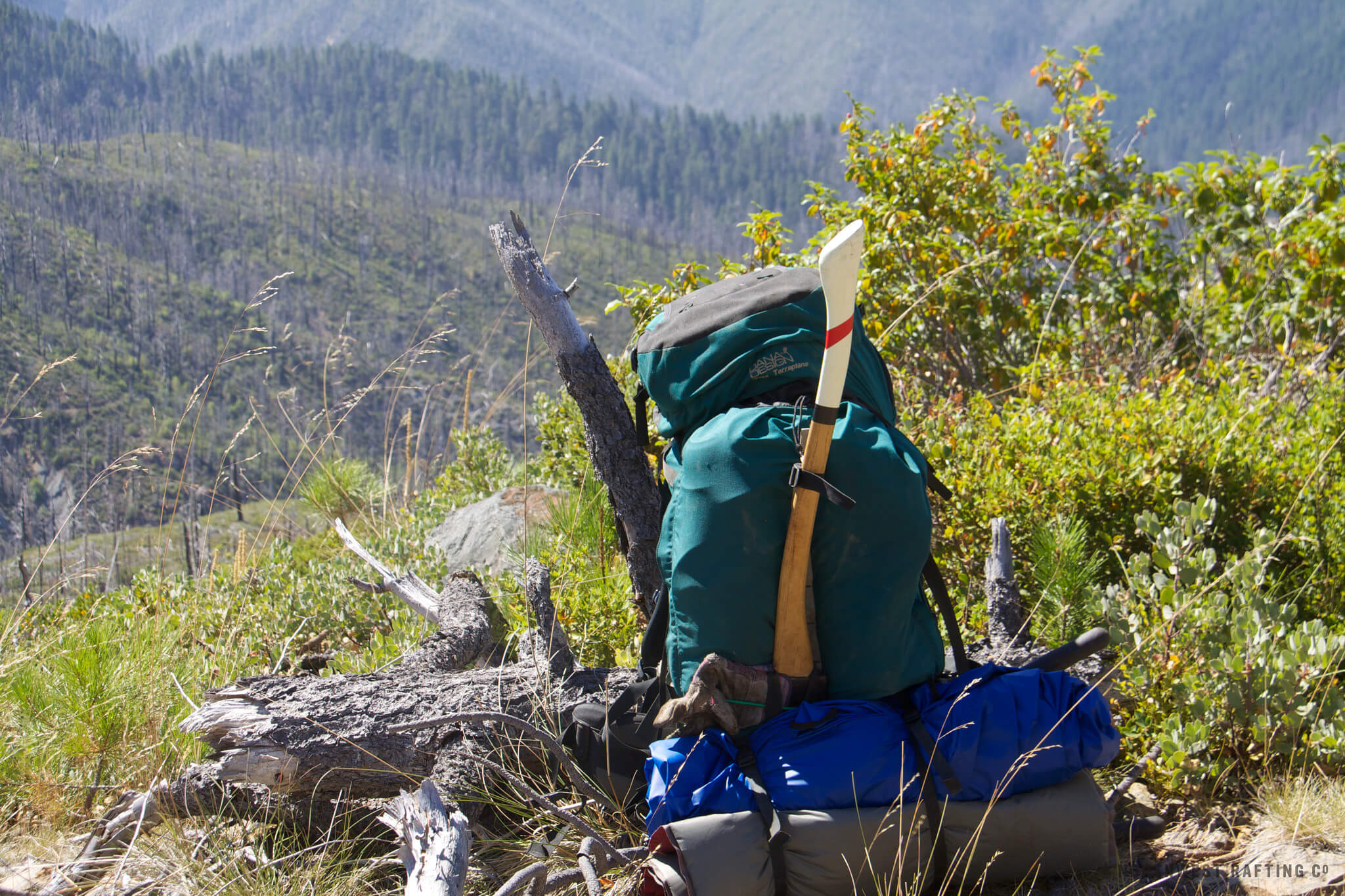
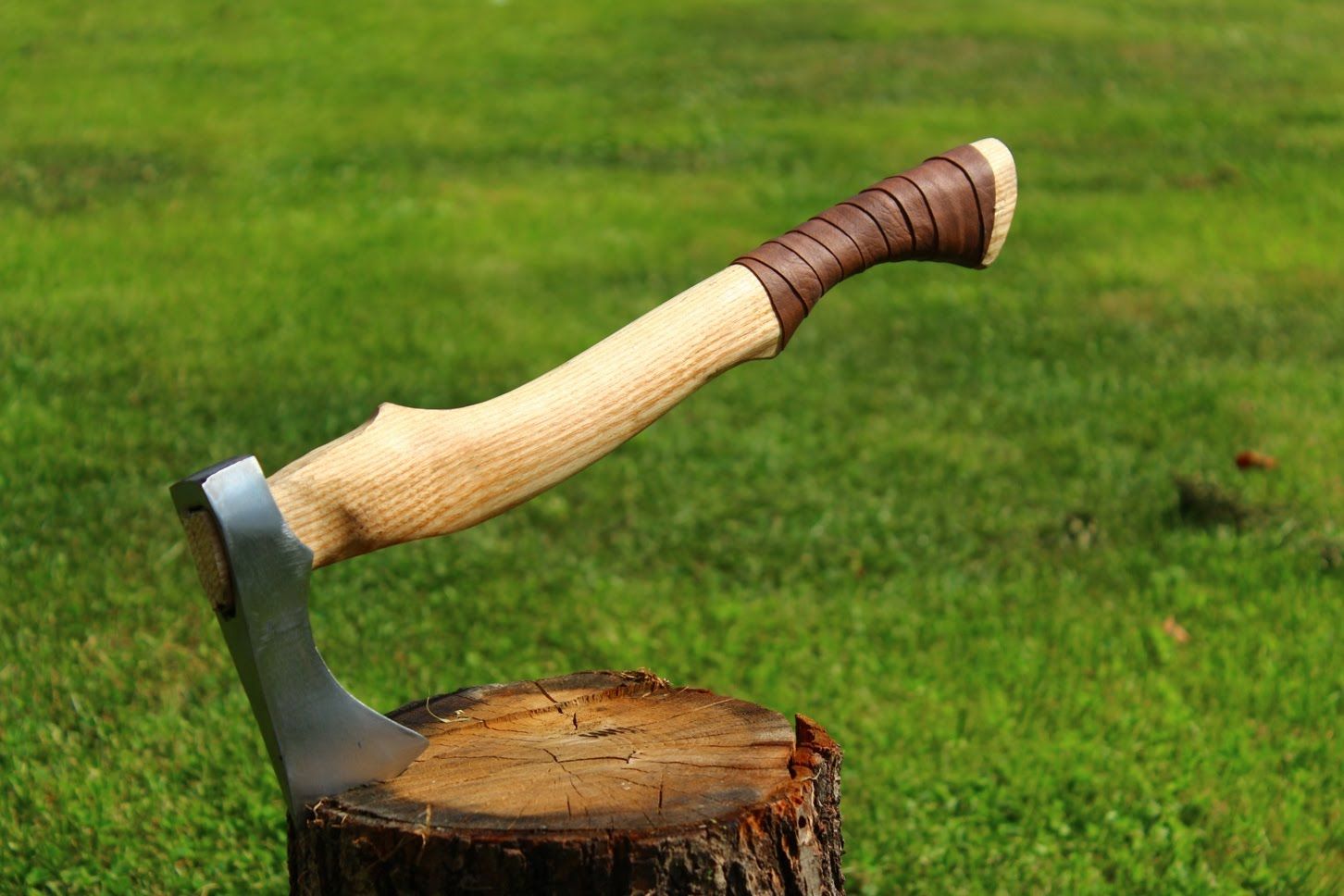
Osage Orange is stronger, more durable and better looking then Hickory or Ash..